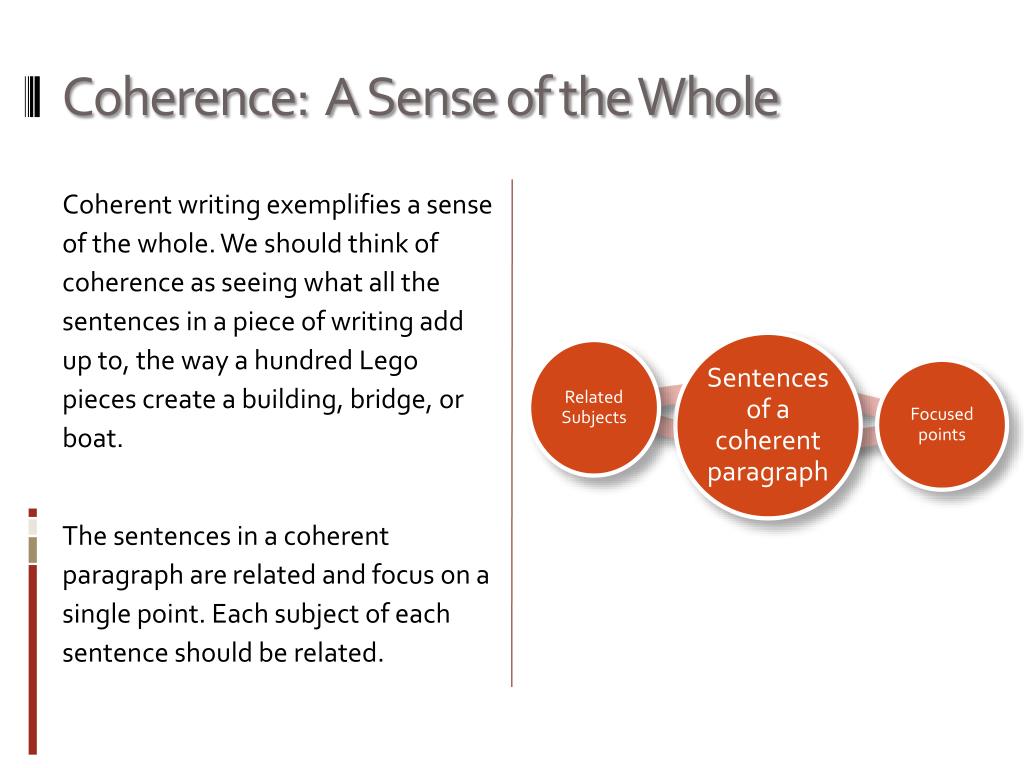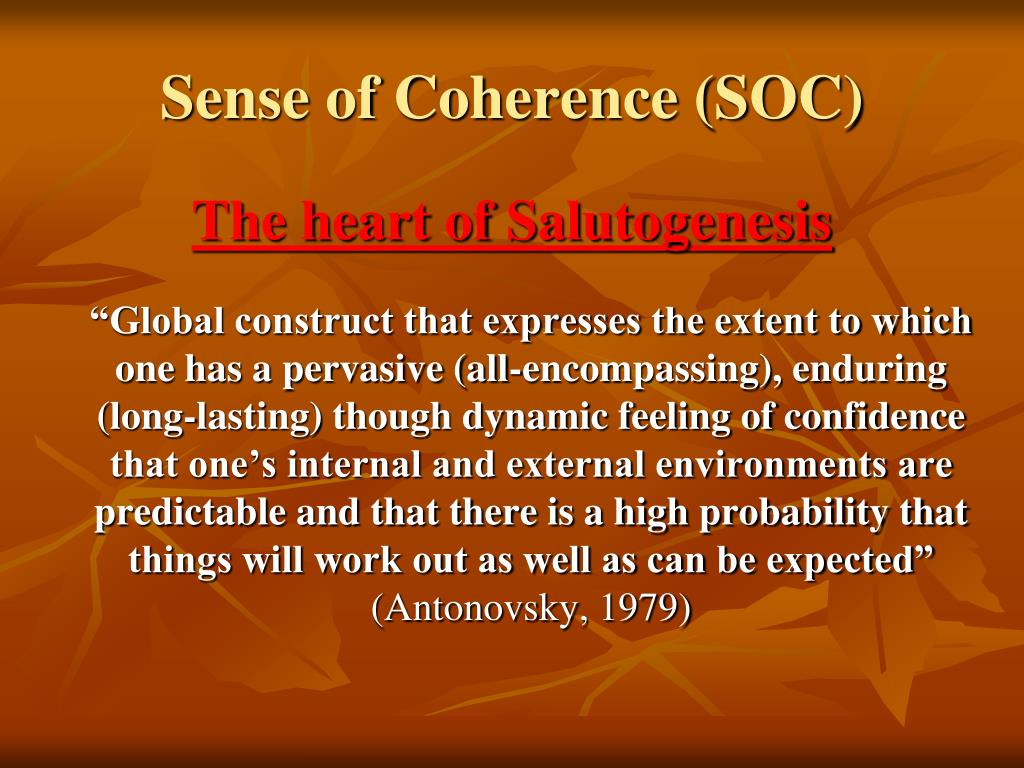


(Eriksson and Mittelmark, 2017).įormal resources might include things like social services or care staff, while informal resources might include things like family or friends. These resources might then be used to help manage the stimuli that we are constantly bombarded with. Manageability, a behavioral aspect, has to do with the degree to which we might feel that there are resources at our disposal. The idea of being of able to make something structured out of a chaotic situation makes it much easier for us to understand the context in which we might see things or view life. This might also have to do with having the ability to see things as orderly, coherent, clear, and structured. Sense of coherence or SOC is a mixture of optimism combined with a sense of control.Ĭomprehensibility, a cognitive aspect, refers to the extent to which you might perceive both internal and external stimuli as being understandable in some kind of rational way. What is a Sense of Coherence? (Definition) A Look at the Two Versions (SOC-13) + (SOC-29).The Sense of Coherence Scale and Questionnaire (PDF).How Can Your Sense of Coherence Affect Your Mental Health?.What is a Sense of Coherence? (Definition).A life-long prospective study on the role of psychosocial factors in neck-shoulder and low-back pain. Self-reported Symptom Distress in Cancer Patients: Reflections of Disease, Illness, or Sickness? Social Science and Medicine, Vol. Sense of Coherence and Outcome of Low-back Surgery: 5-year Follow-up of 80 Patients. Vard Nord Utveckl Forsk, Vol 16, Spring 1996, pp. Salutogenic Model and Utilisation of the SOC scale in Nursing Research: A Methodological Report. Journal of the National Black Nurses Association, Vol. African American Women’s Health Self-Assessment: Health Status and the Sense of Coherence. Journal of Epidemiology and Community Health, Vol. Antonovsky’s sense of coherence scale and the relation with health: a systematic review. Validity of Antonovsky’s sense of coherence scale: a systematic review. “Sense of Coherence,” Social Class and Health in a Danish Population Study. Sense of Coherence – A Protective Factor for Depression in Rheumatoid Arthritis. The structure and properties of the sense of coherence scale. The study concluded that the association between SOC and illness is likely to be causal. The relationships between SOC and childhood conditions, adult social class and adult health were examined further to investigate how SOC inequalities arise. In the same study SOC was highest in the highest social classes. Some studies appear to confirm this, although in one large study, SOC was significantly lower in the youngest age group and increased with age. An additional drawback is that SOC may not be as stable over the lifetime as first envisioned.Īntonovsky believed the SOC remains relatively stable as long as “radical and enduring changes in one’s life situation” do not occur. Both might be measuring a tendency to dissatisfaction, for example. Is SOC the cause or the effect of the symptoms, or is it a parallel issue? When both are assessed simultaneously, no firm conclusion can be drawn.Īnother consideration is that symptom questionnaires and the SOC questionnaire often are both self-reported, so could be picking up on the same characteristics. It is not surprising that those with serious health problems score lower on meaningfulness, and their sense of manageability may be eroded by high levels of pain. It is possible that, rather than signifying patients’ previous personality, serious health problems are a large enough stressor to lower SOC levels. Women who categorized themselves as having no serious health problems had a significantly higher SOC.

One descriptive study looked at the links between self-assessment of health, health status, and SOC in African-American women.


 0 kommentar(er)
0 kommentar(er)
